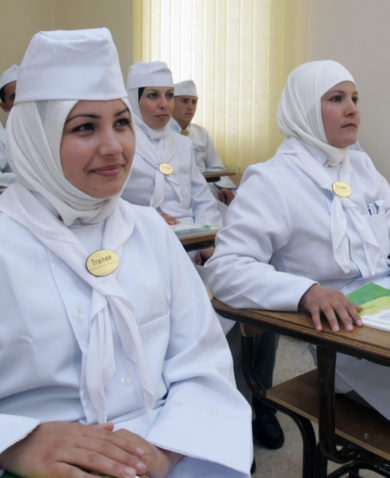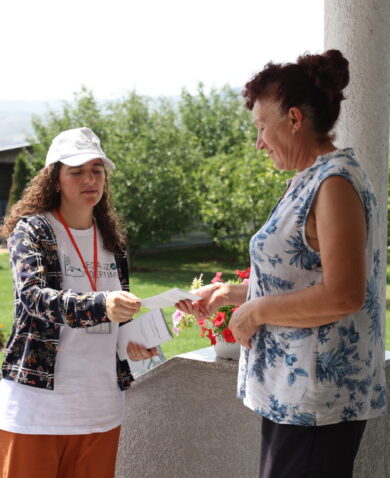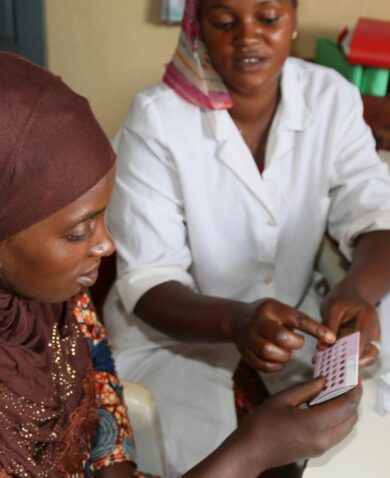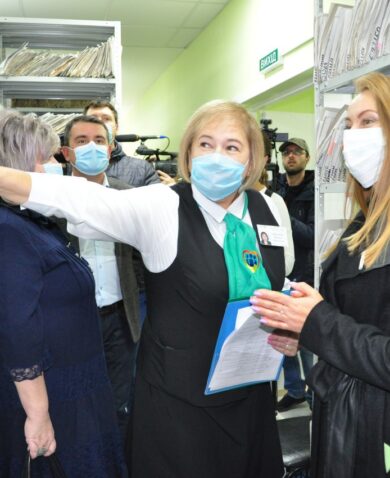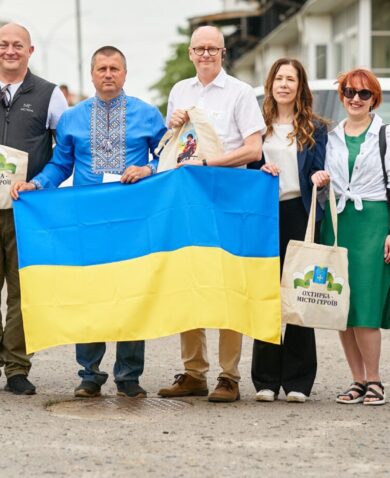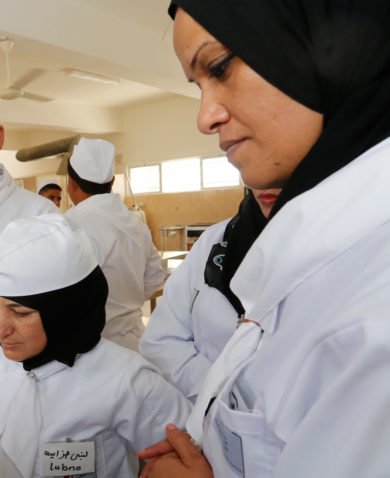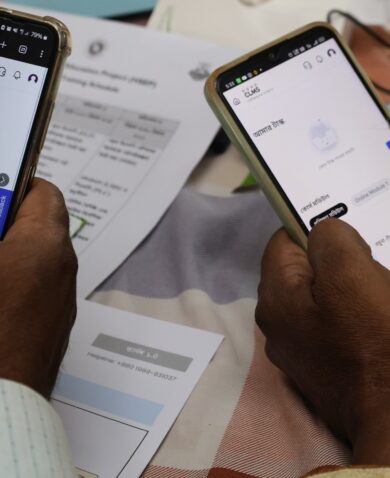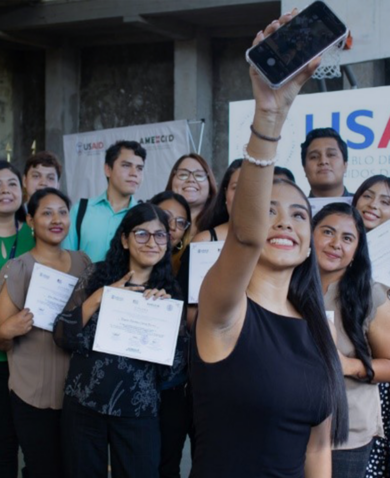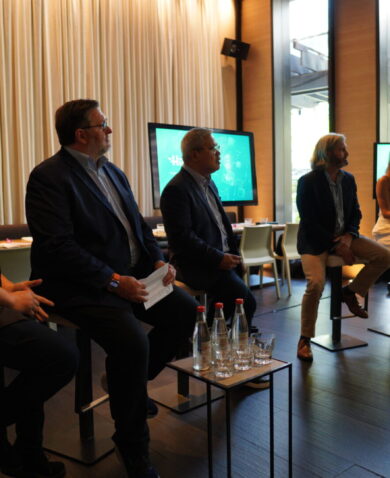
Building the Tech Workforce through Private Sector Engagement
May 31, 2019 | 4 Minute ReadIn Moldova, the “golden triangle” of collaboration among industry, government, and academia is transforming the technology sector. Here’s the recipe for success from the Moldova Competitiveness Project.
Many countries find themselves facing “brain drain” — mass exodus of bright young minds seeking greater opportunities for employment abroad. In the small European country Moldova, for instance, one third of the population has left to find living wages elsewhere. Fortunately, engaging the private sector in technology-related workforce development projects offers a sustainable, market-based solution.
Tapping Moldova’s Tech Potential
In Moldova, the fastest shrinking country in Europe, technical training for modern technologies has not traditionally prepared youth or entrepreneurs for today’s tech-driven global economy. As a result, local firms have limited ability to utilize modern technology solutions that would help them compete in lucrative markets like the European Union, which is just across the border. International firms’ growth in Moldova is stymied by a workforce with insufficient skills in technology. Despite the human capital shortage, information technology (IT) is the fastest growing industry in Moldova. Since USAID began supporting the IT industry in 2005, exports have increased 40-fold to $164 million (2018), with 23,500 jobs available, mainly for youth. Technology-driven jobs pay at least three times more than the average wage of $350 per month. Coders who work on game development, virtual reality, and other visual software, for example, can earn $1,500 to $2,000 per month.
To sustainably increase the technology-related skills of the workforce and the use of technology, the Moldova Competitiveness Project (MCP) engaged the private sector to develop 14 innovation centers. These include seven university-based excellence centers, three regional FabLabs, and four coworking spaces that serve the information and communications technology, engineering, and fashion sectors and numerous creative industries. Each innovation center brings together industry, government, and academia — a collaboration known as the “golden triangle” in Europe. Through the centers, 180 teams and startups have benefited from acceleration programs in technology, fashion, and digital business. Twenty thousand youth and professionals have developed in-demand technical skills in coding, cyber security, the internet of things, electronics, fashion pattern-making, design, and robotics. MCP, which is funded by USAID and the government of Sweden, projects that the centers will have improved the skills of 35,000 youth by 2020.
Considerations for Successful Private Sector Engagement
With each new innovation center, the project adapted and refined its approach. Here are three considerations for successful private sector engagement:
1. Strong, credible private sector firms and proven ideas attract partners and funding. The Tekwill ICT Center for Excellence, which serves 15,000 students and entrepreneurs annually with technology training and startup programs, sprang from Microsoft’s idea to build a training center in Moldova. The MCP team recognized that many technology firms had a shared interest in training a tech-savvy workforce, so it facilitated discussions with Microsoft, IBM, the Moldovan Association of ICT companies, the Moldovan government, and the Technical University of Moldova. Prompted by these discussions, the team worked with the private sector to co-create a concept that included multiple technologies and proven programs that would produce a tech workforce with diverse skills. The inclusion of Microsoft, IBM, USAID, and a concept inspired by MIT’s FabLabs and Estonia’s IBM LEGO robotics program convinced the Moldovan government that the center would be well funded, managed, and successful. The private sector partners joined because they could achieve their core objective of training the workforce to use their technologies while sharing the costs and increasing the likelihood of sustainability.
2. Individual business objectives drive engagement. To secure private sector partners, it is critical to understand the various reasons why firms might engage in a development activity and to ensure that each individual firm can meet its objectives through the activity. In Moldova, global firms engaged in the innovation centers for a variety of reasons. For example, some firms engaged to grow their markets in Moldova. IBM recognized that Moldovan firms would be more likely to purchase their products if they could hire staff trained on IBM products, so IBM brought its Skills Academy and regional trainers to the Tekwill center. Other firms engaged so they could promote their brands and values. Orange Telecom, for instance, already had the largest telecom market share in Moldova but wanted youth — the next generation of its customer base — to associate its brand with exciting new technologies. Therefore, the company’s foundation renovated an ordinary classroom and equipped it with drones, sensors, 3D printers, furniture, and other educational materials for secondary students.
3. Engagement is not just about money. USAID’s investments in technical assistance, quality, and sustainability were critical to private sector engagement. Blending financial resources with technical assistance bought down the risk for private — as well as public — investment. Global firms engaged in the innovation centers, in part, because of the high standards associated with USAID investments. The centers are safe, heated, ventilated, and have high-speed, reliable internet access. USAID’s investment in building a sustainable model with high-quality service provision was also critical to private sector engagement. Universities are responsible for managing the innovation centers, but they typically lack the capacity to do so at startup. To address this, industry associations manage the centers for at least the first three years while building the universities’ management capacity. During this time, the centers experiment with a variety of services and prices to achieve high-quality services and financial sustainability. Pairing associations and universities in the management of the centers ensures that the services are responsive to private sector needs and that sustainability can be achieved.
The innovation centers sit squarely at the intersection of business interests and development objectives and demonstrate how private sector engagement can address challenges that cannot be resolved by government or donor programs alone. The private sector was pivotal in the identification of ideas, the creation of concepts, the development of training programs, and the launching of the centers. Firms including IBM, Microsoft, Cisco, Siemens, SolidWorks, Orange Telecom, BitDefender, and Oracle contributed technology, hardware, software licenses, technical content for training programs, and experts to train local trainers. As a result, the centers offer high-quality, globally recognized training programs for cutting-edge and in-demand technologies with a sustainable business model supported by government, academia, and the private sector.










